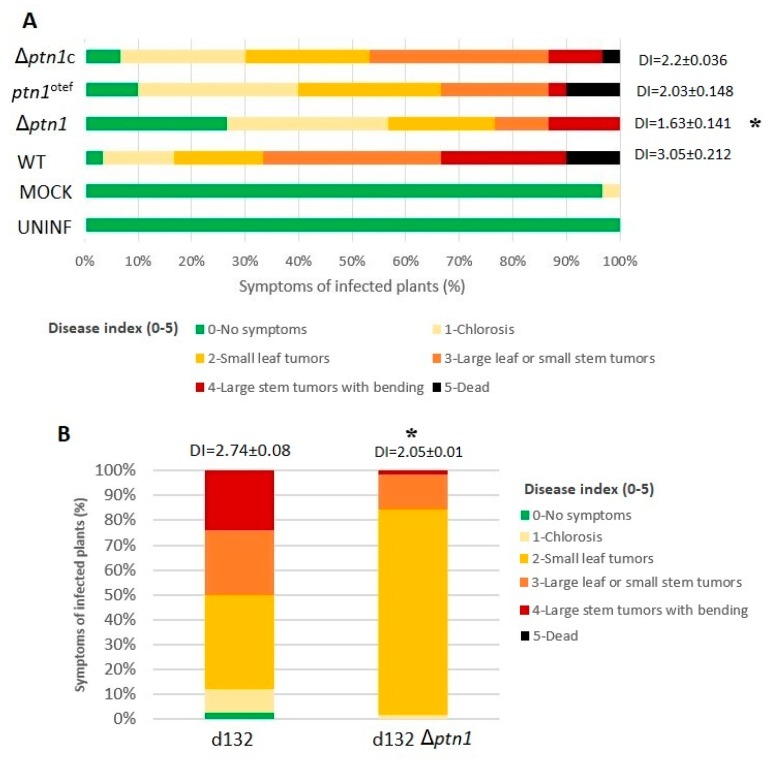Figure 5.
Plant infection. (A) One-week-old maize seedlings were infected with indicated strains of U. maydis. Disease symptoms were scored 14 days post-infection (dpi), and compared to those where both partners were wild type (WT) strains (1/2 a1b1 × 2/9 a2b2). Plants were inoculated with one paired background, indicated on the Y-axis. Disease symptom categories are depicted at the bottom. Numbers to the right of each bar represent mean (±standard deviation) for disease indices (DI). The graphs display the percentage of plants with specific symptoms of infection. The Δptn1 (a1b1 × a2b2) and ptn1otef (a1b1 × a2b2) infections; here, both partners contained the indicated mutations/modifications, displayed reduced pathogenicity. The reduction in Δptn1 strains was statistically significant (p < 0.05) compared to the wild type used in this study. (B) Experiments conducted using diploid strains d132 WT and d132 Δptn1 showed that the deletion of one copy of ptn1 reduces pathogenicity. Numbers above each bar represent mean (± standard deviation) for disease indices (DI). The data were analyzed using Kruskal–Wallis test, followed by a post hoc comparison, and an asterisk (*) indicates significant difference (p < 0.05).

